Our popular notion associates the medieval knight with the imagery of the heavily armored horseman fighting with flair and dominating his ‘lesser’ foes. And while part of this conception is true (in the 11th and 12th centuries), the martial aspect of knights, especially in England, morphed in the later medieval centuries.
In other words, the English knights of the late Middle Ages perceived themselves more as a social class (with its own hierarchy) of a burgeoning kingdom rather than a band of elite warriors serving the realm. So without further ado, let us take a gander at the history of the English knights of the 13th century.
Contents
The Familia
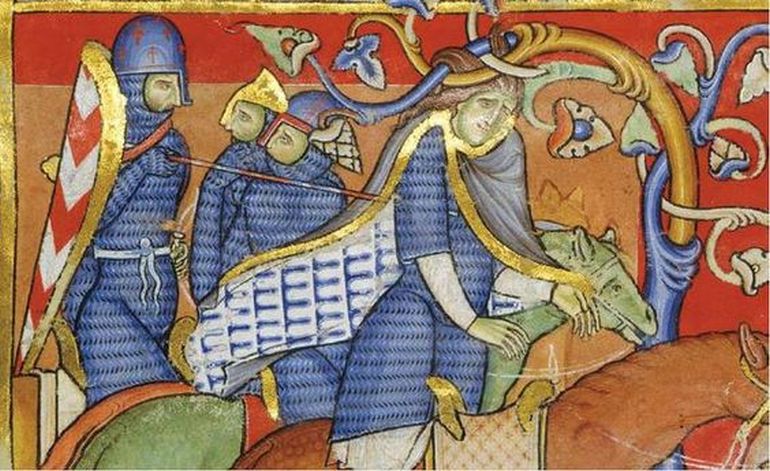
The Germanic tribal warlords and ‘kings’ had their chosen followers who were offered the high ranks of hearthweru (or heath-guard) warriors. The Frankish battle-hardened scarae followed this tradition and so did the lordly class of 13th-century England.
In the latter’s case, these household warriors were known as the familia, and as such consisted of a core body of troops (both knights and squires) who were close to their lord or king. In essence, this elite retinue of mounted warriors contributed to a logistically advantageous situation, especially in marches and areas that saw frequent skirmishes.
Suffice it to say, in most cases, the familia was very well armed and armored, with the king’s very own familia forming the nucleus of his royal army. A muster list from circa 1225 AD showed how Henry III himself could only raise a force of around 100 household knights.
They were accompanied by the royal squires, sergeants, and their own personal squires – thus possibly amounting to a king’s elite retinue of around 300-350 men. And it should be noted that this number rather increased with the passing of the decades.
Now like their predecessors, the familia were given their fair share of remuneration and rations (as opposed to a consistent salary), with bannerets (high-ranking English knights who fought under their own banner) receiving 4 shillings and ordinary English knights receiving 2 shillings (which was increased to 3 on active duty). On occasions, the lord even passed down his heirlooms to his closest household knights, thus suggesting the two-way nature of oaths of fealty.
The Mercenary Side of Affairs
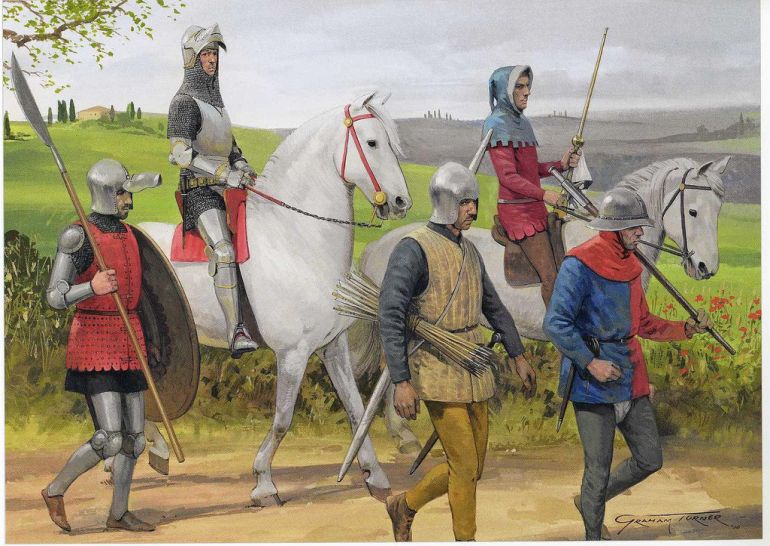
A unique military arrangement in 13th-century England led to the employment and formation of mercenary companies that were counted among the ‘complementary’ units that formed the royal detachments. And while Magna Carta sought to expel most of these foreign warriors, the English kings continued to actively recruit mercenaries for their foreign campaigns.
For example, in 1230 AD, Henry III himself may have hired over 1,500 mercenaries (with 500 of them being knights) in Poitou, west-central France. Similarly, in 1282 AD, his successor Edward I (also known as Edward Longshanks) employed some 1,500 crossbowmen from Gascony, and they vastly outnumbered his paltry 245 mounted household warriors (comprising both royal English knights and squires).
On the other hand, the royal household warriors along with their attachments of mercenaries often formed the majority of the familia warriors on the battlefield. For example, the dwindling nature of the forces mustered by the English feudal lords was mirrored by their scant numbers at the famous Battle of Falkirk in 1298 AD.
To that end, Edward I brought forth 800 of his own men comprising his familia troops and mercenaries, and they were accompanied by only 564 household warriors fielded by the other nobles of England. These 1300-1400 elite troops formed the core of the army that possibly comprised around 15,000 total men.
The ‘Shield’ Of Scutage
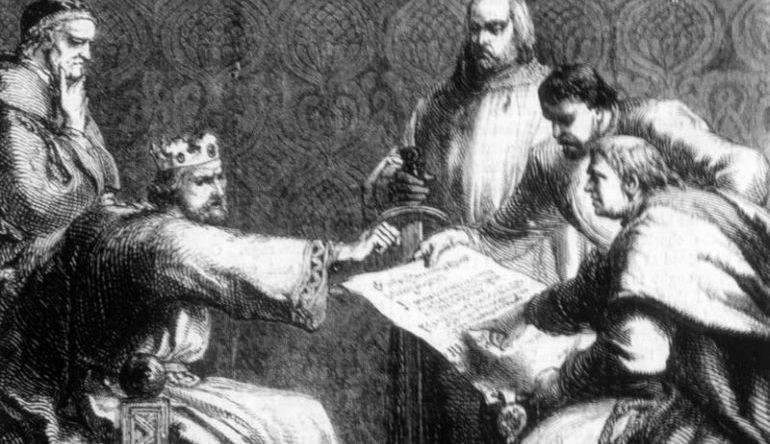
The feudal system brought to England by the Normans essentially alluded to a simple enough scope where magnates and lords received lands from the king in return for military service. In fact, it was this very same societal mechanism that fueled the rise of the European knights in the 11th century AD.
Now theoretically these magnates were expected to appear in person with their full quota of knights and retinue when called upon by the king. But as always, the practicality of the evolving hierarchy of society (sometimes defined by economic means) impeded what was seemingly a fair-enough system for the nobles. Simply put, due to a combination of economic situations and a lack of martial interests, many of these nobles and bannerets didn’t prefer to answer their king’s call to arms.
And their solution came forth in the form of the scutage or ‘shield money’, which basically entailed a tax or fine paid by the magnate in lieu of offering military service. Rather than outfitting their retinue with expensive equipment and then personally leading them into service, many of the English lords favored this less intrusive (and sometimes less costly) alternative of paying scutage for obvious reasons.
To that end, it is estimated that by the early 13th century, around 80 percent of the total 5,000 English knights preferred to pay scutage instead of offering direct military service.
This incredible scope partly explains the 13th-century English monarchs’ penchant for employing mercenaries, who could be paid through funds derived from substantial scutage money. In fact, after the first Welsh War in 1277 AD, King Edward I ordered his sheriffs to collect scutage money of 40 shillings per knight fee.
And while the ‘shield money’ could sometimes get in the way of gathering the required manpower for battles, feudal troops under their magnates (tenants-in-chief) were often directly pressed into service for the king (or paid by the end of the century) to overcome such periodic shortages.
The Different ‘Knightly’ Roles
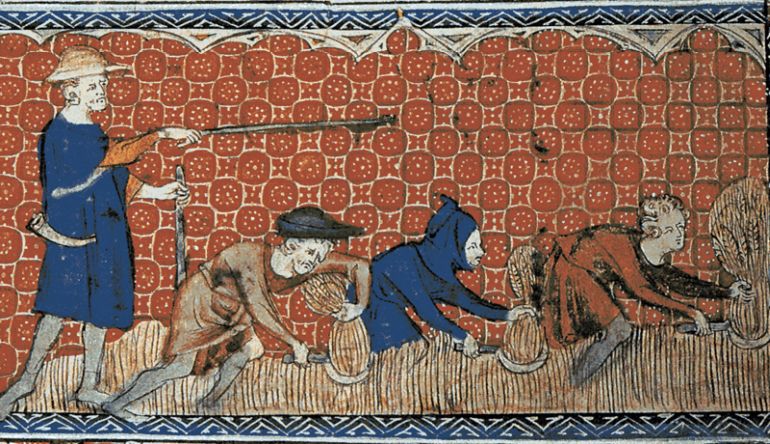
We mentioned in one of our previous articles about the medieval knight –
The very term ‘medieval knight’ is a pretty generic one, and their roles across the realms and fiefs of Europe differed considerably, especially when it came to the administrative and land-holding side of affairs. In essence, the role of a knight extended far beyond the battlefield and ranged into seemingly mundane avenues like petty judges, political advisers to even glorified farmers (at least in the initial years of the 11th century).
The same held true for the English knights of the 13th century. Some of these knights, obligated by the feudal structure, had to unceremoniously serve as castle guards, instead of ideally winning their martial renown on actual battlefields.
On other occasions, knights of the shire were expected to preside over judgments entailing prosaic land settlements and on-site inspections. In a few cases, the knights even acted as local police when they took up the responsibility of apprehending and guarding suspected felons.
English Knights and The Magna Carta Effect
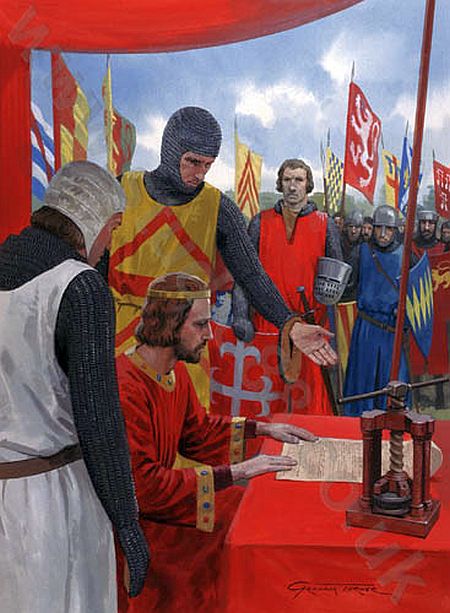
As we discussed earlier, the shift in the feudal paradigm of medieval England mirrored the reluctance of the majority of nobles and magnates to be associated with strenuous military affairs, especially related to the campaigns conducted outside the homeland.
In the years leading up to the Magna Carta, many a lord simply didn’t provide his quota of mounted warriors (including English knights and squires) on the pretext of rising costs of equipment and armor – which in some cases were true.
And the charter of the Magna Carta in 1215 AD rather momentously magnified the ‘rights’ of such high-ranking nobles, who could now bargain their way into furnishing reduced quotas or at least inflated quotas (that even included countesses).
The Magna Carta also heralded the end of what was considered (by the majority of the magnates) the ‘obsolete’ feudal notion of leading one’s retinue in person. This combined with their hesitation to provide their required number of warriors resulted in a paltry number of English knights being called to arms, with the total figure equating to only around 600 in 1229 AD.
However, ironically, in many ways, such limitations were beneficial for the English crown in the long run. The first reason was that the greater number of knights a noble could muster directly alluded to his increasing political influence, which in turn could prove to be a detriment to the centralized royal power base.
Secondly, the lack of quota fulfillment from the nobles provided the crown with the leverage to demand scutage, which as we mentioned earlier was diverted to raise professional mercenary armies whose loyalty lay with the royal treasury (as opposed to personal preferences and aversions).
The Paid Lords and Knights
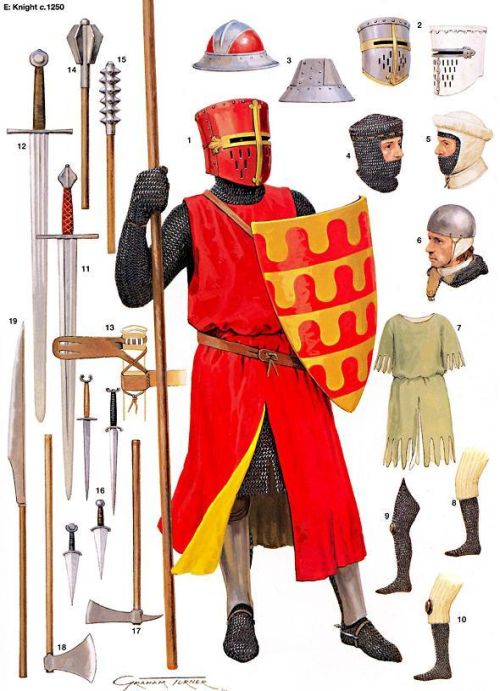
The healthy finances governed by the English crown in the late 13th century brought on by increased taxes, duties, and Italian mercantile credits also allowed the kings to directly pay some lords and their knights, even after their customary 40-day feudal service was over.
In essence, these paid English knights (not to be confused with the remunerated household knights) bridged the gap between feudal warriors and outright mercenaries. It should be noted however that the latter tag was often perceived as a derogatory term by most native magnates, who still believed in or at least kept up the pretense of their noble lineage and heraldry.
In any case, this practice of military service in exchange for direct salary (or pay) was particularly evident during the last decades of the 13th century, under the reign of Edward I. Circumventing the muddled nature of feudal obligations and personal vendettas, the king essentially managed to create a significant part of a standing army that could be deployed for foreign campaigns on moment’s notice.
To that end, it is estimated that almost one-third of the English army (of the 1290s) comprised such paid retinues, with the horsemen being provided with their own armor, weapons, and horses – all equipped by the crown. All in all, at the turn of the century, Edward I could probably muster about 4,000 mounted warriors, comprising knights, sergeants, and squires – and a good percentage of them fell under the ‘paid’ category.
The Unsung Squire
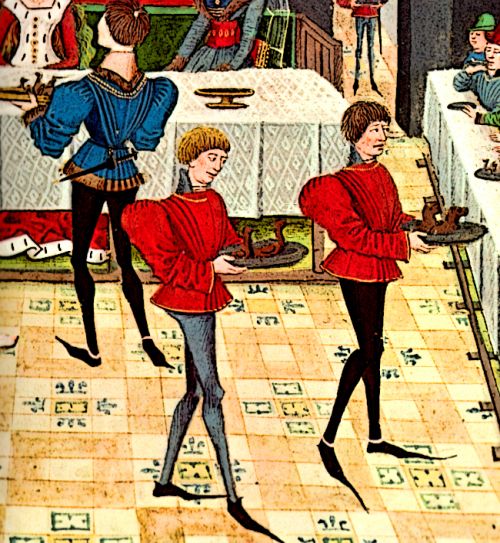
Till now, we have talked about the political aspect surrounding the English knights of the 13th century. But when it comes to the martial ambit, much like the Spartan agoge, there was a process to becoming a medieval knight. By the 13th century, such a procedure became more or less uniform throughout Europe, with the 10-year-old boy (or sometimes even a 7-year-old) usually of noble lineage being sent away to the household of the lord.
Here he became a page, thus basically taking up the role of a servant boy who ran errands. At the same time, he was given lessons in writing, music, and handling basic weapons. The latter part was adopted through various games and competitions that encouraged the boy to take up arms and maneuver them.
By the age of 14, the boy was expected to become a sturdily built teenager with a propensity for loyalty and martial discipline. During this period, his rank was upgraded to a squire, which made him responsible for looking after the arms, armor, and equipment of his superior knight (two squires were usually allotted to an English knight).
Suffice it to say, the squire’s training also became more rigorous, with more focus on rules of tactics for horse-mounted combat; and as a result, even injuries became commonplace. Furthermore, some squires were also expected to hold their own on actual battlefields – which made their training dangerous while keeping up the spirit of ‘adventure’.
Pertaining to the last part, during the phase of an ongoing battle, one of the squires performed the duty of passing the lance and shield to his master, while the other held down the horses. Even during charges, some of the squires were expected to follow their lords in spare horses, if not to take part in the brutal clash, but to at least aid their masters in case the English knights were dismounted from their warhorses.
Such real-time experiences, combined with rigorous training, forged the temperament and martial ability of many a squire – who were soon to become knights themselves.
The Ceremony
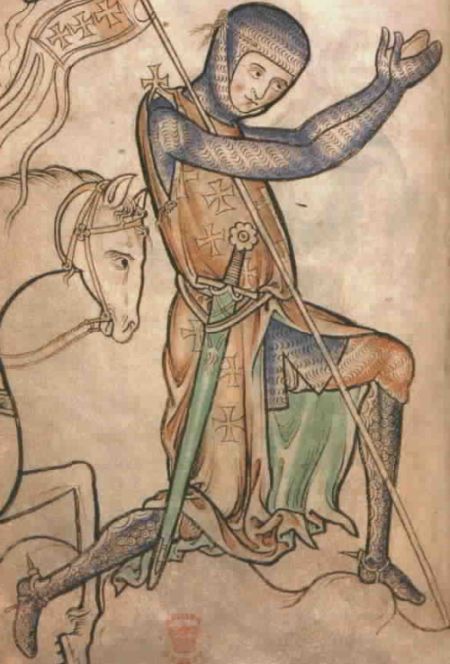
Between the age of 18 to 21, the successful squire was ‘dubbed’ as a knight. The honor could be theoretically bestowed by any fellow knight, but the ceremony was usually reserved for the lord of the squire’s household (and rarely even the king himself, if the squire was brought up in the royal court).
Now on practical occasions, some squires were inducted into the knightly ranks on just the eve of battle, as means to bolster their morale, while few others were dubbed so after the battle as rewards for their courageous actions.
Initially (before the 12th century), these dubbing scenarios entailed humble affairs with the lord slapping the newly assigned knight on his neck and then uttering a few quick words. However, by the later middle ages, circa the 13th century, the achievement of knighthood took a more ceremonious turn, with the church indulging in various emblematic and crowd-friendly festivities.
For example, the young man himself was draped in specific attires and accouterments, each with their symbolic undertone – like a white tunic and belt indicating purity, a red cloak symbolizing the blood (of enemies) he will spill, and brown stockings that embodied the earth he will ultimately return to.
Interestingly enough, the very shape of the sword also carried forth an allegorical scope – as must have been identified by the church. That is because it resembled the cruciform with the crossguard cutting a right angle across the grip which extends into the blade. Such imagery must have played its psychological role in bolstering many a spiritual medieval knight.
However, beyond such symbolic affairs and rituals, the newly dubbed knight (and his family) was also expected to give a feast, and on occasions (when it came to richer nobles) even arrange a tournament. But over time, the cost of accommodating such ‘festivities’ became too expensive to bear for many of the ordinary knights – so much so that the impending ceremony forced some candidates to even forego their knighthood.
And once again reverting to Magna Carta, there was a particular clause that gave many of the nobles the right to ask their tenants to pay for the ceremony when it came to the knighting of their eldest sons.
The Forcible Call
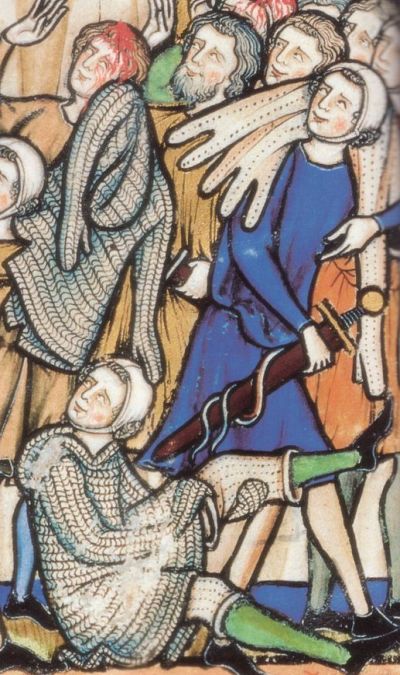
As we can gather from the earlier entries, there was a reluctance from the majority of 13th-century English nobles and knights to join the military cause (due to several reasons). And again treading the route of practicality, this did cause the crown some logistical predicaments on occasions when there was the need for armored and experienced warriors (or at least scutage money). During such scenarios, the king could, in fact, invoke what is known as the distraint of knighthood.
Simply put, the crown, in rare situations, did forcibly call upon landholders to join the ranks of knighthood. Such demands were expected to be met within a particular timeframe, often entailing a few months.
For example, in 1241 AD, one such crown-sanctioned order called upon men with lands worth more than £20. Similarly, in 1282 AD, the order instructed men with properties worth more than £30 to equip themselves with armor and horses, regardless of their knightly status.
And interestingly, by 1292 AD, all free men who had over £40 worth of property, were ordered to be knighted, thus suggesting how wealth, as opposed to lineage, was the deciding factor when it came to the societal evolution of English knights.
The Paradoxical Notion of Medieval Knightly Ideals
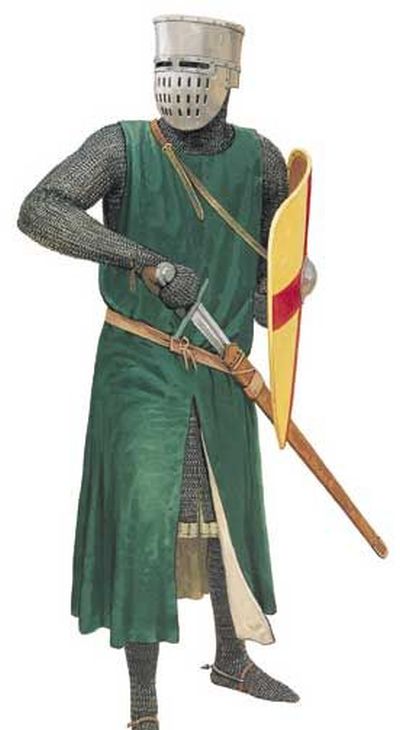
Now the concept of the medieval knight fighting for spoils and renown held true for many of the early free landholders of 11th-century Europe. But this notion was considered somewhat anachronistic in 13th-century England. And while the martial tradition of English knights declined, their penchant for being recognized as an elite class within the society rather increased, perhaps out of desperation.
In essence, their value as military assets was gradually replaced by a more professional standing army, and thus it heralded the transition of English knights to an economic class with more wealth than the commoners. This seemingly unflattering scope (as perceived in those times) paradoxically fueled the need for such English nobles and knights to flaunt their status as a still-relevant feudal power base.
Such ‘flaunting’ measures were mirrored by the various customs adopted by the English knights and lords. For example, they looked down upon the consumption of green vegetables, while preferring their meat and fish-based protein-rich diets.
Some of the rich magnates made use of personal seals that usually depicted them as warriors sitting astride warhorses, thus alluding to an embellished scenario that was a far cry from the realpolitik workings of the contemporary period.
The ideas of chivalry (a word derived from French cheval – meaning ‘horse’) rather reinforced such ‘pretentious’ attitudes, by overcompensating for the depreciating martial capacity of many such lords and knights. Other knightly traditions went beyond battlefields to include positive social customs, like never giving evil counsel to a lady and treating her with respect.
But such codes of conduct necessarily didn’t mean that every medieval knight followed them to stringent levels. In many cases, it was found that English knights largely instigated plundering and looting after battles – actions that were against chivalric traditions. But they did it for practical (and profitable) reasons rather than willfully going against codes of conduct encompassing chivalry.
And lastly, the church also played an important role in ‘modifying’ many chivalry codes that obviously suited its purposes, like upholding Christian values and duties that would have inspired some English knights to participate in the Crusades.
Honorable Mention – Brotherhood in Arms
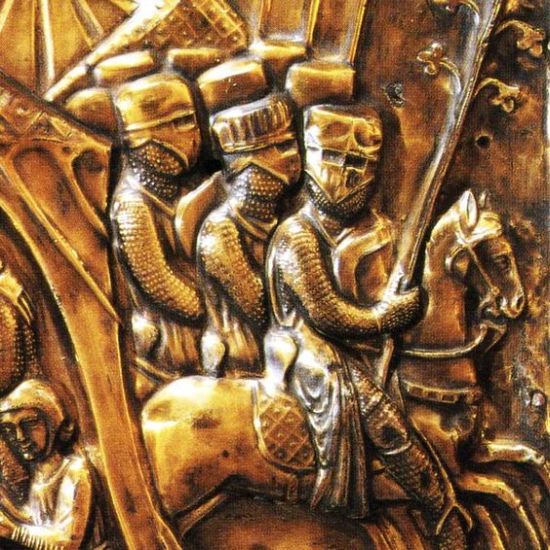
Epitomizing the contemporary perception of English knights who saw themselves as a separate social entity within the kingdom, the brotherhood in arms pertains to a pretty common agreement that usually involved two high-ranking members of the knightly class.
Designed as a mutual agreement, it called upon the knights to support each other on all occasions except for duties owed to the English crown. In other words, the agreement encompassed a chivalry-bound partnership of sorts where each knight had the right to share the gains and also the burdens of the other party.
Sources: Medieval-Life-and-Times (link) / TheMiddleAges / MetMuseum / Medieval-Spell (link)
Book References: English Medieval Knight 1200-1300 (By Christopher Gravett) / Nobles, Knights, and Men-at-Arms in the Middle Ages (By Maurice Keen) / Knight the Warrior and World of Chivalry (By Robert Jones)
Featured Image Illustration by dmavromatis (DeviantArt)
And in case we have not attributed or misattributed any image, artwork, or photograph, we apologize in advance. Please let us know via the ‘Contact Us’ link, provided both above the top bar and at the bottom bar of the page.
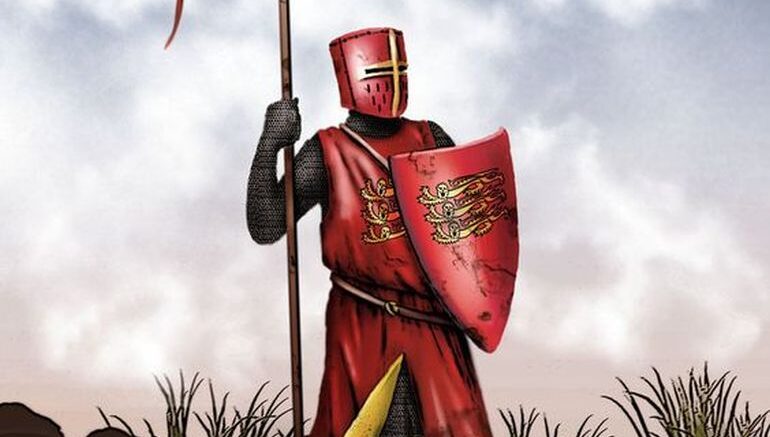
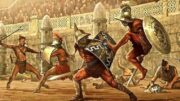

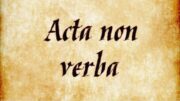

Be the first to comment on "Medieval English Knights: 10 Things You Should Know"